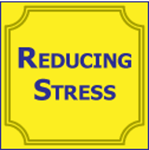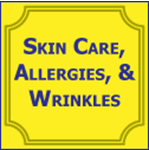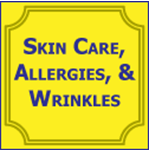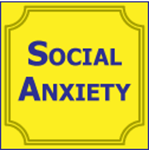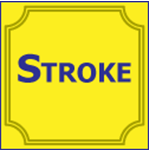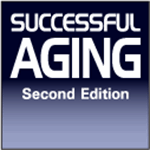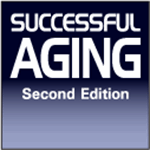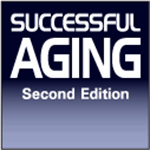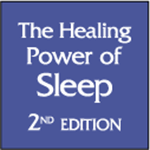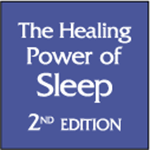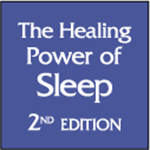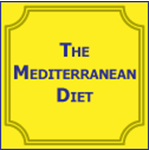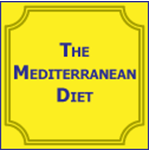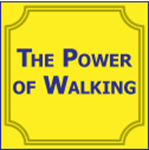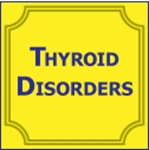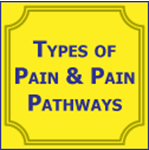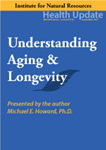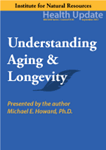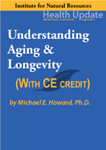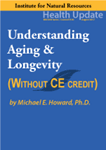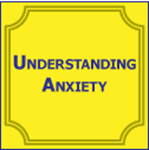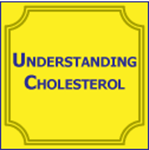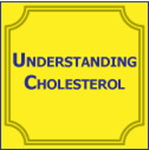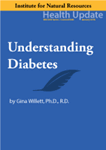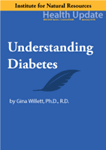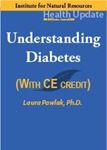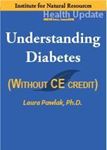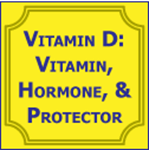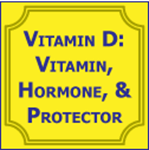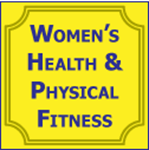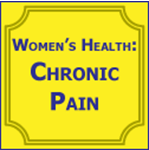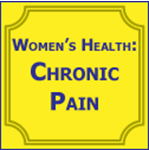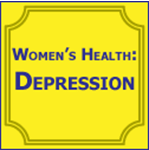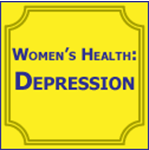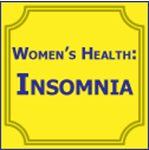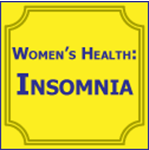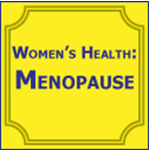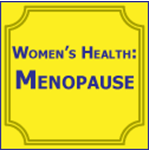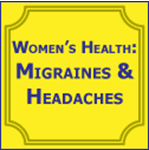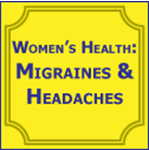You have no items in your shopping cart.
Recently viewed products
Elder Care
Reducing Stress - Ebooklet
Explains how the body responds to and processes stress. Identifies the impact of stress on risk for heart disease and the physiological mechanisms that may mediate this link. Describes the role stress may play in increasing risk for health problems across the life span. Identifies a number of interventions for reducing stress.
$25.00
Skin Care, Allergies, & Wrinkles
Explains the diagnosis and newest treatments for skin conditions and skin allergies. Describes new laser treatments for wrinkles and other skin conditions. Lists the most effective preventive and treatment methods for skin cancer. Identifies coping strategies for patients with psychosocial issues caused by chronic skin conditions. Identifies future trends in medical and cosmetic skin treatments.
$30.00
Skin Care, Allergies, & Wrinkles - Ebooklet
Explains the diagnosis and newest treatments for skin conditions and skin allergies. Describes new laser treatments for wrinkles and other skin conditions. Lists the most effective preventive and treatment methods for skin cancer. Identifies coping strategies for patients with psychosocial issues caused by chronic skin conditions. Identifies future trends in medical and cosmetic skin treatments.
$25.00
Social Anxiety
Defines social anxiety. Describes the symptoms of social anxiety. Identifies the causes of social anxiety. Describes the similarities and differences between shyness and social anxiety. Outlines the role of thinking in social anxiety. Describes strategies for coping with and reducing social anxiety.
$30.00
Stroke
Describes the pathophysiology associated with stroke. Discusses the major risk factors for stroke. Identifies the lifestyle and dietary changes that can help prevent the onset of a stroke. Describes currently available treatments and new therapies still under investigation. Explains the role of the rehabilitation team, including physical and occupational therapists, and counselors, in helping to improve patient outcome.
$30.00
Successful Aging - 2nd ed
This home-study course describes the best ways to age healthfully and improve your patients` quality of life at any age, including tips on how to cultivate a youthful attitude, safeguard against stress and chronic illness, improve dietary and exercise habits, maximize memory and beef up energy, enhance financial security, and live a long and rewarding life.
$35.00
Successful Aging 2nd ed - EBOOK
This home-study course describes the best ways to age healthfully and improve your patients` quality of life at any age, including tips on how to cultivate a youthful attitude, safeguard against stress and chronic illness, improve dietary and exercise habits, maximize memory and beef up energy, enhance financial security, and live a long and rewarding life.
$25.00
Successful Aging 2nd ed - EBOOK only *NO CE
This home-study course describes the best ways to age healthfully and improve your patients` quality of life at any age, including tips on how to cultivate a youthful attitude, safeguard against stress and chronic illness, improve dietary and exercise habits, maximize memory and beef up energy, enhance financial security, and live a long and rewarding life.
$15.00
Sugar, Salt, & Fat - 2nd edition
This home-study course outlines the various factors that make foods palatable. It provides evidence that the "hyperpalatability" of our current food supply is undermining our normal satiety signals, motivating the drive to eat even when there is no physiologic need for food. This course presents evidence that repeated exposure to high quantities of palatable foods (i.e., those high in sugar, fat and salt) can alter the brain in ways similar to drugs of abuse, essentially "rewiring" the brain to promote compulsive eating and loss of control over food.
$35.00
The Healing Power of Sleep - 2nd Edition
Millions of us struggle with sleep several nights a week, if not every night. In the The Healing Power of Sleep, Dr. O`Brien explains the basics of sleep architecture, the effects of common illnesses on sleep, how our daily habits can help or hinder sleep, and straightforward solutions.
$40.00
The Healing Power of Sleep 2nd Edition - EBOOK
Millions of us struggle with sleep several nights a week, if not every night. In the The Healing Power of Sleep, Dr. O`Brien explains the basics of sleep architecture, the effects of common illnesses on sleep, how our daily habits can help or hinder sleep, and straightforward solutions.
$30.00
The Healing Power of Sleep 2nd Edition - EBOOK only *NO CE
Millions of us struggle with sleep several nights a week, if not every night. In the The Healing Power of Sleep, Dr. O`Brien explains the basics of sleep architecture, the effects of common illnesses on sleep, how our daily habits can help or hinder sleep, and straightforward solutions.
$20.00
The Mediterranean Diet
Identifies the countries included in the Mediterranean region and discusses their traditional way of life. Describes the food-based guidelines that make up the Mediterranean pyramid. Explains the significance of physical activity, diet, and social interaction as part of the Mediterranean way of life. Discusses the research that supports the health benefits of the Mediterranean Diet with respect to heart disease, diabetes, obesity, cognitive function, cancer, and other chronic diseases. Describes how the Western diet and lifestyle can be modified to comply with Mediterranean lifestyle recommendations.
$30.00
The Mediterranean Diet - Ebooklet
Identifies the countries included in the Mediterranean region and discusses their traditional way of life. Describes the food-based guidelines that make up the Mediterranean pyramid. Explains the significance of physical activity, diet, and social interaction as part of the Mediterranean way of life. Discusses the research that supports the health benefits of the Mediterranean Diet with respect to heart disease, diabetes, obesity, cognitive function, cancer, and other chronic diseases. Describes how the Western diet and lifestyle can be modified to comply with Mediterranean lifestyle recommendations.
$25.00
The Power of Walking
States the CDC’s, and the American College of Sports Medicine’s recommendations for daily physical activity for adults, children, and adolescents. Describes the health benefits of walking. Explains how walking can reduce the risk of various diseases, including diabetes, heart disease, cancer, depression, and dementia. Describes how walking can benefit children, adults, pregnant women, and the elderly. Identifies the physical, occupational, and other therapeutic benefits of walking. Outlines how to start and maintain a walking program.
$30.00
Thyroid Disorders
Describes the anatomy of the thyroid gland. Describes the complex thyroid gland physiology. Distinguishes between hypothyroidism and hyperthyroidism. Discusses thyroid nodules. Discusses thyroid cancer.
$30.00
Types of Pain & Pain Pathways
Lists and describes major steps in the historical development of pain concepts and treatment. Discusses the difference between acute and chronic pain. Describes the characteristics of nociceptive, neuropathic, and psychogenic pain. Lists and describes the four components of the pain pathway. Identifies parts of the brain involved in pain processing. Describes the methods and accuracy of measuring pain. Explains sex and gender differences in pain. Discusses the impact of chronic pain on healthcare and dental professional practice.
$30.00
Understanding Aging & Longevity - DVD - 6 Hours (w/Home-study exam)
Describes how the biopsychosocial model of health and how disease impacts aging, health, life span, and longevity. Explains the dfferences between normal aging and age-related disease and their effects on life span and longevity, including periodontal disease. Describes the effects of genetics, epigenetics, and the environment on aging. Describes how the body and brain age at the cellular, tissue, organ, and organ system levels. Explains the causes of recent increases in life expectancy in the world and the United States. Describes the “super-ager” centenarians who have the longest and healthiest lives among all people. Lists the ten bio-psycho-social behavioral choices that everyone can do to extend health and life spans. Describes how the information in this course can be utilized to improve patient care and patient outcomes. Describes, for this course, the implications for dentistry, mental health, nursing, and other healthcare professions.
$83.00
Understanding Aging & Longevity - DVD only *NO CE - 6 hours
Describes how the biopsychosocial model of health and how disease impacts aging, health, life span, and longevity. Explains the dfferences between normal aging and age-related disease and their effects on life span and longevity, including periodontal disease. Describes the effects of genetics, epigenetics, and the environment on aging. Describes how the body and brain age at the cellular, tissue, organ, and organ system levels. Explains the causes of recent increases in life expectancy in the world and the United States. Describes the “super-ager” centenarians who have the longest and healthiest lives among all people. Lists the ten bio-psycho-social behavioral choices that everyone can do to extend health and life spans. Describes how the information in this course can be utilized to improve patient care and patient outcomes. Describes, for this course, the implications for dentistry, mental health, nursing, and other healthcare professions.
$69.00
Understanding Aging & Longevity - Streaming Video - 6 Hours (w/Home-study exam)
Describes how the biopsychosocial model of health and how disease impacts aging, health, life span, and longevity. Explains the dfferences between normal aging and age-related disease and their effects on life span and longevity, including periodontal disease. Describes the effects of genetics, epigenetics, and the environment on aging. Describes how the body and brain age at the cellular, tissue, organ, and organ system levels. Explains the causes of recent increases in life expectancy in the world and the United States. Describes the “super-ager” centenarians who have the longest and healthiest lives among all people. Lists the ten bio-psycho-social behavioral choices that everyone can do to extend health and life spans. Describes how the information in this course can be utilized to improve patient care and patient outcomes. Describes, for this course, the implications for dentistry, mental health, nursing, and other healthcare professions.
$83.00
Understanding Aging & Longevity - Streaming Video only *NO CE - 6 hours
Describes how the biopsychosocial model of health and how disease impacts aging, health, life span, and longevity. Explains the dfferences between normal aging and age-related disease and their effects on life span and longevity, including periodontal disease. Describes the effects of genetics, epigenetics, and the environment on aging. Describes how the body and brain age at the cellular, tissue, organ, and organ system levels. Explains the causes of recent increases in life expectancy in the world and the United States. Describes the “super-ager” centenarians who have the longest and healthiest lives among all people. Lists the ten bio-psycho-social behavioral choices that everyone can do to extend health and life spans. Describes how the information in this course can be utilized to improve patient care and patient outcomes. Describes, for this course, the implications for dentistry, mental health, nursing, and other healthcare professions.
$69.00
Understanding Anxiety
Explains the difference between normal anxiety and an anxiety disorder. Describes the causes of anxiety. Outlines the demographics of anxiety. Describes the anxious personality. Recognizes and describes the most common anxiety disorders in adults and children including symptoms and treatment. Describes the role of exercise in treating anxiety. Describes common methods of assessing anxiety in primary care settings. Explains how state anxiety and trait anxiety differ. Outlines common comorbidities frequently seen with anxiety.
$30.00
Understanding Cholesterol
Lists the various lipid components of total cholesterol and describes how they are formed in the body. Describes the physiological function of each lipid faction. Discusses how abnormal lipid levels may contribute to cardiovascular disease. Describes the lipid profile test and explains what values are considered desirable. Explains how lifestyle factors such as diet and inactivity can contribute to lipid abnormalities and treatment options. Describes the various categories of drugs used to treat lipid abnormalities. Describes some effective, realistic, and easily implemented strategies to improve patient adherence.
$30.00
Understanding Cholesterol - Ebooklet
Lists the various lipid components of total cholesterol and describes how they are formed in the body. Describes the physiological function of each lipid faction. Discusses how abnormal lipid levels may contribute to cardiovascular disease. Describes the lipid profile test and explains what values are considered desirable. Explains how lifestyle factors such as diet and inactivity can contribute to lipid abnormalities and treatment options. Describes the various categories of drugs used to treat lipid abnormalities. Describes some effective, realistic, and easily implemented strategies to improve patient adherence.
$25.00
Understanding Diabetes - DVD - 6 Hours (w/Home-study exam)
Compares and contrasts the different forms of diabetes. Explains why the number of cases of Type 2 diabetes is expanding worldwide. Describes how gut health impacts metabolic health and diabetes risk. Outlines potential complications of diabetes as well as appropriate interventions. Recognizes how insulin resistance and Type 2 diabetes are linked to other conditions such as cognitive decline, depression, cancer sleep disorders, and periodontal disease. States the rationale for individualized blood sugar targets. Outlines the specific strategies to prevent, manage, and potentially reverse Type-2 diabetes, including lifestyle, surgical, and pharmacologic interventions. Describes how the information in this course can be utilized to improve patient care and patient outcomes. Describes, for this course, the implications for dentistry, mental health, and other health professions.
$83.00
Understanding Diabetes - DVD only *NO CE - 6 hours
Compares and contrasts the different forms of diabetes. Explains why the number of cases of Type 2 diabetes is expanding worldwide. Describes how gut health impacts metabolic health and diabetes risk. Outlines potential complications of diabetes as well as appropriate interventions. Recognizes how insulin resistance and Type 2 diabetes are linked to other conditions such as cognitive decline, depression, cancer sleep disorders, and periodontal disease. States the rationale for individualized blood sugar targets. Outlines the specific strategies to prevent, manage, and potentially reverse Type-2 diabetes, including lifestyle, surgical, and pharmacologic interventions. Describes how the information in this course can be utilized to improve patient care and patient outcomes. Describes, for this course, the implications for dentistry, mental health, and other health professions.
$69.00
Understanding Diabetes - Streaming Video - 6 Hours (w/Home-study Exam)
Compares and contrasts the different forms of diabetes. Explains why the number of cases of Type 2 diabetes is expanding worldwide. Describes how gut health impacts metabolic health and diabetes risk. Outlines potential complications of diabetes as well as appropriate interventions. Recognizes how insulin resistance and Type 2 diabetes are linked to other conditions such as cognitive decline, depression, cancer sleep disorders, and periodontal disease. States the rationale for individualized blood sugar targets. Outlines the specific strategies to prevent, manage, and potentially reverse Type-2 diabetes, including lifestyle, surgical, and pharmacologic interventions. Describes how the information in this course can be utilized to improve patient care and patient outcomes. Describes, for this course, the implications for dentistry, mental health, and other health professions.
$83.00
Understanding Diabetes - Streaming Video only *NO CE - 6 hours
Compares and contrasts the different forms of diabetes. Explains why the number of cases of Type 2 diabetes is expanding worldwide. Describes how gut health impacts metabolic health and diabetes risk. Outlines potential complications of diabetes as well as appropriate interventions. Recognizes how insulin resistance and Type 2 diabetes are linked to other conditions such as cognitive decline, depression, cancer sleep disorders, and periodontal disease. States the rationale for individualized blood sugar targets. Outlines the specific strategies to prevent, manage, and potentially reverse Type-2 diabetes, including lifestyle, surgical, and pharmacologic interventions. Describes how the information in this course can be utilized to improve patient care and patient outcomes. Describes, for this course, the implications for dentistry, mental health, and other health professions.
$69.00
Vitamin D: Vitamin, Hormone, & Protector
Discusses the historical incidents that led to the discovery of vitamin D. Recognizes the synthesis and function of various forms of inactive and active vitamin D. Describes the role that vitamin D may play in the physiological function of various systems. Lists the current guidelines for supplementation of vitamin D. Lists the blood levels that define the various categories of vitamin D deficiency and sufficiency. Identifies the best food sources of vitamin D.
$30.00
Vitamin D: Vitamin, Hormone, & Protector - Ebooklet
Discusses the historical incidents that led to the discovery of vitamin D. Recognizes the synthesis and function of various forms of inactive and active vitamin D. Describes the role that vitamin D may play in the physiological function of various systems. Lists the current guidelines for supplementation of vitamin D. Lists the blood levels that define the various categories of vitamin D deficiency and sufficiency. Identifies the best food sources of vitamin D.
$25.00
Women's Health & Physical Fitness
Identifies the benefits of regular exercise and fitness at all stages of life. Describes the current physical activity guidelines for healthy American adults, focusing on those specifically applicable to women. Explains the components of a good physical activity program and why each one is important for a woman’s health. Describes the fitness requirements for women during pregnancy and after menopause.
$30.00
Women's Health: Chronic Pain
Describes the difference between chronic and acute pain. Identifies the symptoms of and treatments for chronic pain conditions affecting women. Discusses the role of home remedies, relaxation techniques, and other non-drug therapies for treating chronic pain. Explains the psychosocial aspects of treating chronic pain. Describes how to manage use of pain medications, including opioids, to ensure patient safety.
$30.00
Women's Health: Chronic Pain - Ebooklet
Describes the difference between chronic and acute pain. Identifies the symptoms of and treatments for chronic pain conditions affecting women. Discusses the role of home remedies, relaxation techniques, and other non-drug therapies for treating chronic pain. Explains the psychosocial aspects of treating chronic pain. Describes how to manage use of pain medications, including opioids, to ensure patient safety.
$25.00
Women's Health: Depression
Identifies the most prevalent forms of depression. Identifies the symptoms of depression and mania. Identifies the differences in presentation across age groups and sexes. Compares the theories of depression. Reviews depression treatment modalities.
$30.00
Women's Health: Depression - Ebooklet
Identifies the most prevalent forms of depression. Identifies the symptoms of depression and mania. Identifies the differences in presentation across age groups and sexes. Compares the theories of depression. Reviews depression treatment modalities.
$25.00
Women's Health: Insomnia
Discusses the physiology of sleep. Describes healthy sleep patterns. Identifies the different types of insomnia. Discusses women’s sleep problems across their life cycle. Identify treatments for insomnia including optimal sleep hygiene, behavioral methods, and pharmaceuticals.
$30.00
Women's Health: Insomnia - Ebooklet
Discusses the physiology of sleep. Describes healthy sleep patterns. Identifies the different types of insomnia. Discusses women’s sleep problems across their life cycle. Identify treatments for insomnia including optimal sleep hygiene, behavioral methods, and pharmaceuticals.
$25.00
Women's Health: Menopause
Identifies the hormonal and neurologic changes that occur during menopause. Discusses the symptoms of perimenopause and menopause, as well as effective treatments, including medication and behavioral approaches. Describes the latest research on the benefits and risks of hormone replacement therapy, and identifies the conditions and symptoms for which HRT may be appropriate. Discusses the pros and cons of a variety of alternative remedies for menopausal insomnia, hot flashes, and depression, such as black cohosh and vitamin B supplements. Addresses recent developments in the prevention of chronic disease risk at menopause, including lifestyle changes and prophylactic medications.
$30.00
Women's Health: Menopause - Ebooklet
Identifies the hormonal and neurologic changes that occur during menopause. Discusses the symptoms of perimenopause and menopause, as well as effective treatments, including medication and behavioral approaches. Describes the latest research on the benefits and risks of hormone replacement therapy, and identifies the conditions and symptoms for which HRT may be appropriate. Discusses the pros and cons of a variety of alternative remedies for menopausal insomnia, hot flashes, and depression, such as black cohosh and vitamin B supplements. Addresses recent developments in the prevention of chronic disease risk at menopause, including lifestyle changes and prophylactic medications.
$25.00
Women's Health: Migraines & Headaches
Identifies the primary types of headache. Discusses the management of each type of headache. Identifies and discusses the management of headaches in women across chronological milestones.
$30.00
Women's Health: Migraines & Headaches - Ebooklet
Identifies the primary types of headache. Discusses the management of each type of headache. Identifies and discusses the management of headaches in women across chronological milestones.
$25.00
Your Mouth, Your Health - 2nd edition
Tooth decay could be a precursor to many health problems – notably obesity, diabetes, and heart disease. Dental decay is the first to develop, and it predicts these and many other illnesses. That is because periodontitis, excess weight, hypertension, and other ailments such as hemorrhoids and deep venous thrombosis, often stem from the same cause: poor dietary choices. All dentists see the same patients again and again, suffering from plaque, cavities, infection – all of which are needless, preventable, and reversible. In this course, Dr. Somborac makes the connection between overall health and dental health. He describes how to prevent tooth decay and health decline, through easy-to-apply guidance you can use to help save patients` teeth and their lives.
$35.00
Your Mouth, Your Health - 3rd edition - EBOOK
Tooth decay could be a precursor to many health problems – notably obesity, diabetes, and heart disease. Dental decay is the first to develop, and it predicts these and many other illnesses. That is because periodontitis, excess weight, hypertension, and other ailments such as hemorrhoids and deep venous thrombosis, often stem from the same cause: poor dietary choices. All dentists see the same patients again and again, suffering from plaque, cavities, infection – all of which are needless, preventable, and reversible. In this course, Dr. Somborac makes the connection between overall health and dental health. He describes how to prevent tooth decay and health decline, through easy-to-apply guidance you can use to help save patients` teeth and their lives.
$25.00
Your Mouth, Your Health - 3rd edition - EBOOK only *NO CE
Tooth decay could be a precursor to many health problems – notably obesity, diabetes, and heart disease. Dental decay is the first to develop, and it predicts these and many other illnesses. That is because periodontitis, excess weight, hypertension, and other ailments such as hemorrhoids and deep venous thrombosis, often stem from the same cause: poor dietary choices. All dentists see the same patients again and again, suffering from plaque, cavities, infection – all of which are needless, preventable, and reversible. In this course, Dr. Somborac makes the connection between overall health and dental health. He describes how to prevent tooth decay and health decline, through easy-to-apply guidance you can use to help save patients` teeth and their lives.
$15.00
Your Mouth, Your Health - 3rd edition -Exam & Evaluation ONLY
This is the test and evaluation PDF file that goes with Your Mouth, Your Health - 3rd Edition. It can only be purchased with the eBook.
$0.00



